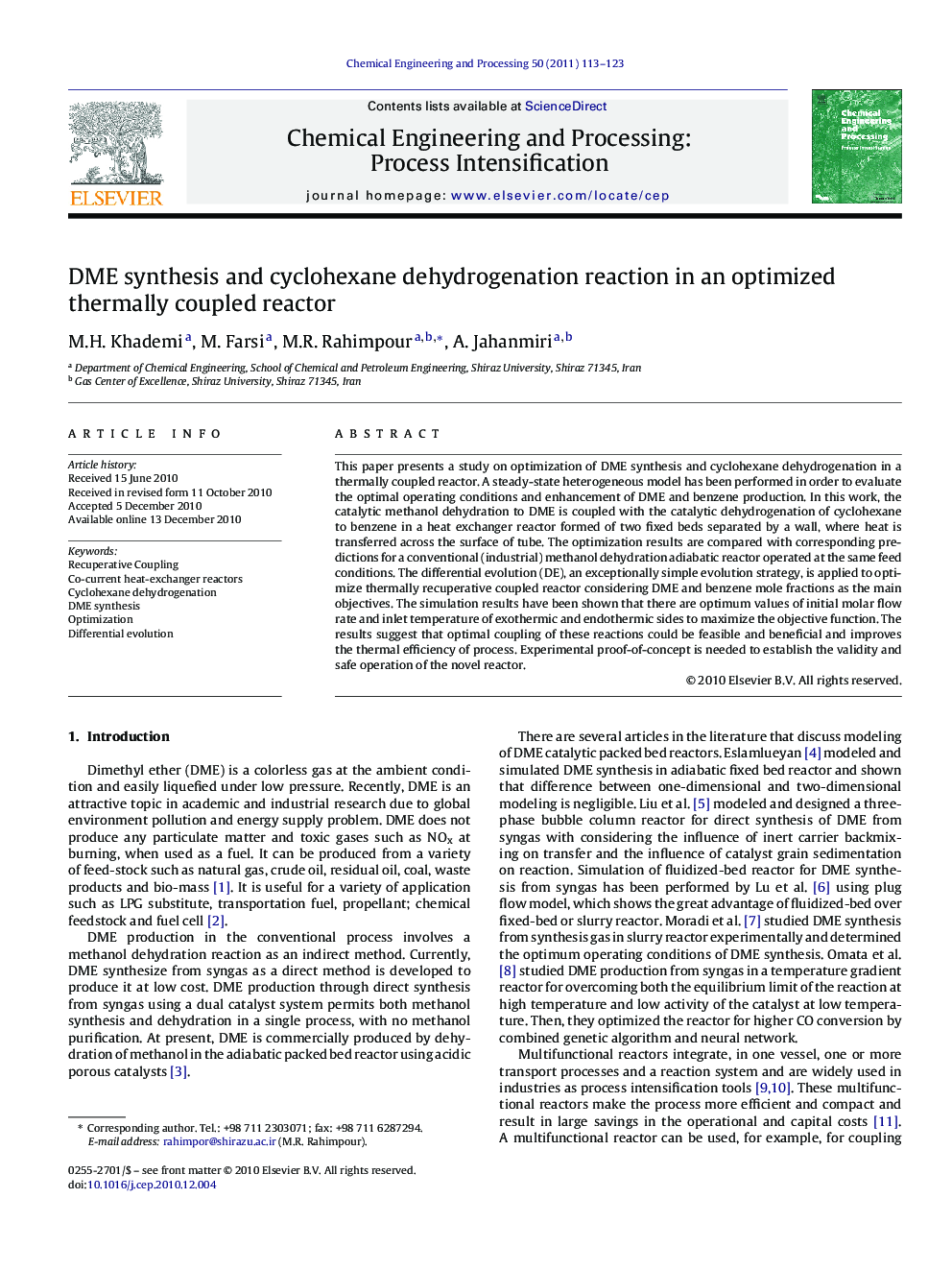| Article ID | Journal | Published Year | Pages | File Type |
|---|---|---|---|---|
| 687732 | Chemical Engineering and Processing: Process Intensification | 2011 | 11 Pages |
This paper presents a study on optimization of DME synthesis and cyclohexane dehydrogenation in a thermally coupled reactor. A steady-state heterogeneous model has been performed in order to evaluate the optimal operating conditions and enhancement of DME and benzene production. In this work, the catalytic methanol dehydration to DME is coupled with the catalytic dehydrogenation of cyclohexane to benzene in a heat exchanger reactor formed of two fixed beds separated by a wall, where heat is transferred across the surface of tube. The optimization results are compared with corresponding predictions for a conventional (industrial) methanol dehydration adiabatic reactor operated at the same feed conditions. The differential evolution (DE), an exceptionally simple evolution strategy, is applied to optimize thermally recuperative coupled reactor considering DME and benzene mole fractions as the main objectives. The simulation results have been shown that there are optimum values of initial molar flow rate and inlet temperature of exothermic and endothermic sides to maximize the objective function. The results suggest that optimal coupling of these reactions could be feasible and beneficial and improves the thermal efficiency of process. Experimental proof-of-concept is needed to establish the validity and safe operation of the novel reactor.
